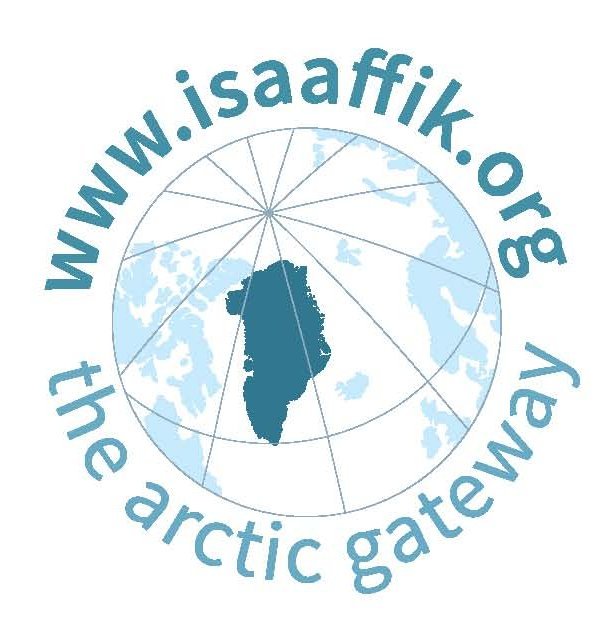Observation Facility Catalogue
The Observation Facility Catalogue has been developed to provide an overview of the observation facilities which collect SIOS data. An observation facility can be one instrument or a collection of instruments, e.g. a weather station, and is a term used by the World Meteorological Organization (WMO). The annotation is standardised following the WMO standards as far as possible, in order to make entries unambiguous and interoperable internationally.
- About OFC
-
The purpose of the catalogue is to make better use of the existing research infrastructure by facilitating the search for given parameters and their location. In this way, duplication can be avoided and new measurements can be co-located with existing ones. The catalogue may also be used to gain a simple overview of collected parameters and how to access the data. The search interface allows users to search for GCMD keywords or to filter by status, type or observatory. The map interface may be used to search in a particular area.
The catalogue was developed by the Norwegian Meteorological Institute, with input from a task force consisting of representatives from the Norwegian Polar Institute and the Alfred Wegener Institute. NySMAC members and RICC gave valuable input on the test version.
- How to add observation facilities
-
To enter data in the Observation Facility Catalogue, you must be logged in and have assigned the role "RI responsible" by the administrator. Please contact the Observing Network Infrastructure Officer to have this role assigned to your account.
SUBMIT DATA TO THE OBSERVATION FACILITY CATALOGUE
More information: How to enter data into the Observation Facility Catalogue (pdf)
- Integration of GIOS infrastructures
-

In addition to the SIOS records, this catalogue has the option to display research infrastructures from the Greenland Integrated Observing System (GIOS). The default view displays only SIOS research infrastructures. To see GIOS research infrastructures, use the menu to the right to filter. Records are fetched from the Isaaffik website.
- How to use the REST Export endpoint
-
The REST endpoint (see the right panel below the filters), can be used to query the catalogue in a machine-readable way. See an example on how to query the json endpoint in this notebook:
| Observation Facility | Variables | Contact | Additional Information |
|---|---|---|---|
| COAT_vegetation modules_2 | |
Virve Ravolainen
virve.ravolainen@npolar.no Norwegian Polar Institute |
Type: land platform (fixed)
Status: Operational RIS ids: 10771 Site info: Two dryas vegetation modules (30 x 30 m plots) in Leinstranda |
| CR01 - InSAR Corner Reflector | |
Dariusz Ignatiuk
dariusz.ignatiuk@us.edu.pl University of Silesia in Katowice, Faculty of Natural Sciences, Institute of Earth Sciences |
Landing Page: https://crios.pl/
Type: land platform (fixed) Status: Operational RIS ids: 12089 Site info: InSAR corner reflectors for terrestrial laser scanning and aerial calibration. The reflectors are made of metal (structural steel, aluminium) and fully protected against corrosion by, e.g. galvanising or painting. The reflector consists of two reflecting elements made of three square planes (perforated and solid plates) arranged perpendicular to each other. The reflecting elements are made of 5 panels consisting of a frame made of closed profiles with a square cross-section with dimensions of 75 x 75 cm (external dimension). The installation is permanently attached to the ground. CRIOS – Cryosphere Integrated Observation Network on Svalbard Project financed from the EEA Financial Mechanism 2014-2021 operated by the National Science Centre in Poland Agreement no. UMO-2022/43/7/ST10/00001 to a predefined project no. 2022/43/7/ST10/00001 Project period: 08.09.2022 - 30.04.2024 (2029) Core data: No |
| CR02 - InSAR Corner Reflector | |
Dariusz Ignatiuk
dariusz.ignatiuk@us.edu.pl University of Silesia in Katowice, Faculty of Natural Sciences, Institute of Earth Sciences |
Landing Page: https://crios.pl/
Type: land platform (fixed) Status: Operational RIS ids: 12089 Site info: InSAR corner reflectors for terrestrial laser scanning and aerial calibration. The reflectors are made of metal (structural steel, aluminium) and fully protected against corrosion by, e.g. galvanising or painting. The reflector consists of two reflecting elements made of three square planes (perforated and solid plates) arranged perpendicular to each other. The reflecting elements are made of 5 panels consisting of a frame made of closed profiles with a square cross-section with dimensions of 75 x 75 cm (external dimension). The installation is permanently attached to the ground. CRIOS – Cryosphere Integrated Observation Network on Svalbard Project financed from the EEA Financial Mechanism 2014-2021 operated by the National Science Centre in Poland Agreement no. UMO-2022/43/7/ST10/00001 to a predefined project no. 2022/43/7/ST10/00001 Project period: 08.09.2022 - 30.04.2024 (2029) Core data: No |
| CR03 - InSAR Corner Reflector | |
Dariusz Ignatiuk
dariusz.ignatiuk@us.edu.pl University of Silesia in Katowice, Faculty of Natural Sciences, Institute of Earth Sciences |
Landing Page: https://crios.pl/
Type: land platform (fixed) Status: Operational RIS ids: 12089 Site info: InSAR corner reflectors for terrestrial laser scanning and aerial calibration. The reflectors are made of metal (structural steel, aluminium) and fully protected against corrosion by, e.g. galvanising or painting. The reflector consists of two reflecting elements made of three square planes (perforated and solid plates) arranged perpendicular to each other. The reflecting elements are made of 5 panels consisting of a frame made of closed profiles with a square cross-section with dimensions of 75 x 75 cm (external dimension). The installation is permanently attached to the ground. CRIOS – Cryosphere Integrated Observation Network on Svalbard Project financed from the EEA Financial Mechanism 2014-2021 operated by the National Science Centre in Poland Agreement no. UMO-2022/43/7/ST10/00001 to a predefined project no. 2022/43/7/ST10/00001 Project period: 08.09.2022 - 30.04.2024 (2029) Core data: No |
| CR04 - InSAR Corner Reflector | |
Dariusz Ignatiuk
dariusz.ignatiuk@us.edu.pl University of Silesia in Katowice, Faculty of Natural Sciences, Institute of Earth Sciences |
Landing Page: https://crios.pl/
Type: not applicable Status: Planned RIS ids: 12089 Site info: The reflector is stored in Longyearbyen and is waiting to be installed at the selected location. InSAR corner reflectors for terrestrial laser scanning and aerial calibration. The reflectors are made of metal (structural steel, aluminium) and fully protected against corrosion by, e.g. galvanising or painting. The reflector consists of two reflecting elements made of three square planes (perforated and solid plates) arranged perpendicular to each other. The reflecting elements are made of 5 panels consisting of a frame made of closed profiles with a square cross-section with dimensions of 75 x 75 cm (external dimension). CRIOS – Cryosphere Integrated Observation Network on Svalbard Project financed from the EEA Financial Mechanism 2014-2021 operated by the National Science Centre in Poland Agreement no. UMO-2022/43/7/ST10/00001 to a predefined project no. 2022/43/7/ST10/00001 Project period: 08.09.2022 - 30.04.2024 (2029) Core data: No |
| Camera | |
Julia Boike, Niko Bornemann
Julia.Boike@awi.de Alfred Wegener Institute |
Type: land platform (fixed)
Status: Operational RIS ids: 2950 Site info: Bayelva Core data: No |
| Cavity Ring-Down Spectroscopy | |
Daisuke Goto
goto.daisuke@nipr.ac.jp National Institute for Polar Research |
Type: land platform (fixed)
Status: Operational RIS ids: 10027 Core data: No |
| Ceilometer | |
Type: land platform (fixed)
Status: Operational RIS ids: 6817 Site info: Part of the BSRN network. Core data: No |
|
| Ceilometer | |
Dr. Nuncio Murukesh
nuncio@ncpor.res.in National Centre for Polar and Ocean Research (NCPOR) |
Type: land platform (fixed)
Status: Operational Core data: No |
| Condensation particle counter | |
Dominique Fleury
Dominique.Fleury@ipev.fr The French Polar Institute Paul-Émile Victor |
Type: land platform (fixed)
Status: Operational Core data: No |



























